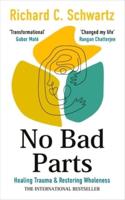Publisher's Synopsis
Every year as spring break approaches or when another promising young student dies in an alcohol-related tragedy, college drinking becomes a national issue. Although excessive drinking by college students is accepted as a rite of passage by many, alcohol-related tragedies never fail to shock us and to prompt calls for immediate action. When schools respond with well intentioned programs, but the problem persists, it is natural to wonder how much we really understand about excessive, college student drinking. Is it inevitable? Can we take steps to prevent it or reduce its consequences? Why have efforts to date proven ineffective?The fact is that since 1976, when the newly created National Institute on Alcohol Abuse and Alcoholism (NIAAA) issued its only report on abusive drinking by college students, research advances have transformed our understanding of alcohol abuse and related problems. For example, we now know that a broad array of factors affect college student drinking behavior. These include an individual's susceptibility to alcohol, campus norms related to drinking, and conditions within the larger community that make alcohol readily accessible and fail to penalize inappropriate use. Together these influences contribute to a culture of drinking that is more damaging and deadly than previously recognized.This report, developed by the NIAAA-supported Task Force on College Drinking after 3 years of intensive discussions, describes our new understanding of dangerous drinking behavior by college students and its consequences for both drinkers and nondrinkers. Rather than debate how many drink how much, the Task Force focused on the consequences. What it found challenges many common assumptions about the size and nature of the problem. Not only do some 1,400 college students between the ages of 18 and 24 die every year as a result of hazardous drinking, but a half million suffer unintentional injuries under the influence of alcohol. Another 600,000 are assaulted by fellow drinking students and more than 70,000 are sexually assaulted. The data on academic achievement, damage to facilities, and health problems are equally alarming. The nature of existing data leads to the inference that some college students meet the diagnostic criteria for alcohol dependence as currently specified by the American Psychiatric Association's Diagnostic and Statistical Manual of Mental Disorders, 4th edition (DSM-IV), but are not receiving treatment. Although most students who exhibit dangerous drinking behavior during their college career mature out of heavy drinking, this behavior and its consequences are nonetheless cause for concern.In its report, the Task Force outlines a series of recommendations for colleges and universities, researchers, and NIAAA. What distinguishes this guidance from others is its firm reliance on scientific evidence and its call for collaboration between academic institutions and researchers. In response to the information and recommendations in this report, NIAAA is committing an additional $8 million over the next two fiscal years to the issue of college drinking. It also is collaborating with several college presidents to determine the effectiveness of policies aimed at reducing the problem.The chancellor of a university that recently suffered the alcohol-related death of one of its students said, "Our children's lives are at real risk, and universities need to make every effort to prevent any more lives from being wasted." This report underscores the wisdom of that advice and urges us to join forces in changing the culture of drinking on our Nation's campuses from one that fosters destructive behavior to one that discourages it.









